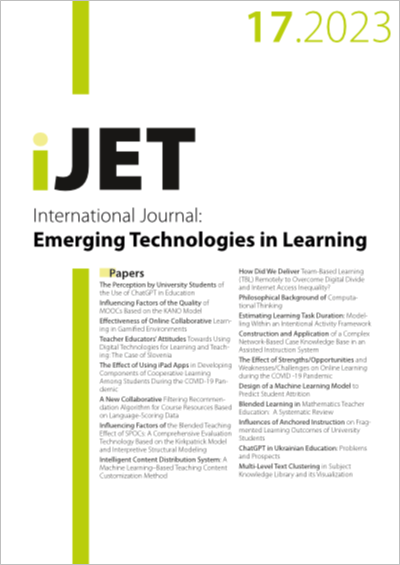The Effect of Strengths/Opportunities and Weaknesses/Challenges on Online Learning during the COVID -19 Pandemic
DOI:
https://doi.org/10.3991/ijet.v18i17.39517Keywords:
Online learning, strengths, opportunities, weaknesses, challenges, curriculum implementation, teaching qualityAbstract
This paper researched the effect of strengths, opportunities and weaknesses or challenges on the online learning process during the COVID-19 pandemic. The research approach focuses on curriculum implementation and teaching quality using information technology systems (online teaching platforms). The research included 146 teachers (lower secondary and upper secondary school level), from whose responses we identified the strengths and opportunities as well as the weaknesses and challenges of online learning. While analyzing the data, we tested the construct reliability and noticed that Cronbach’s Alpha turned out to be at an acceptable level. From the paired sample t-test data analysis, it has also been concluded that, in the online learning process, strengths and opportunities are more considerable than weaknesses and challenges. Furthermore, linear regression indicated that the adjusted R-square of this model is 0.353, which signifies that the independent variables, strengths and opportunities and weaknesses or challenges, have an effect of 35.30% on the dependent variables, the curriculum implementation and the teaching quality, when using the information technology systems. As a result, we reached the conclusion that the positive effect of strengths and opportunities is higher than the negative effect of weaknesses or challenges.
Downloads
Published
How to Cite
Issue
Section
License
Copyright (c) 2023 Fahri Marevci, Armend Salihu

This work is licensed under a Creative Commons Attribution 4.0 International License.



